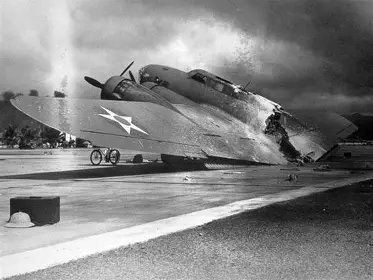An unlikely discovery
In 1972, soldiers aboard a helicopter were flying over the island country of Papua New Guinea, in the southwestern Pacific, when they spotted something unusual down below.
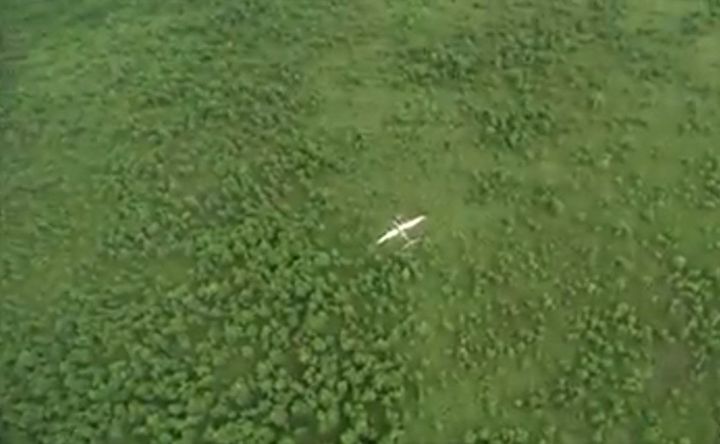
Screenshot from “The Swamp Ghost”
In the middle of the remote Agaiambo swamp, nearly hidden from sight, was something that obviously didn’t belong there. They decided to investigate. They landed as best as they could, and saw that what had seemed so small from up the sky was actually a mighty war plane!
The Swamp Ghost
They wondered how in the world had a military aircraft ended up in that area. It obviously hadn’t crashed, otherwise it would have been in pieces. But why would someone have landed it in the middle of a swamp, and how long had it been sitting there?
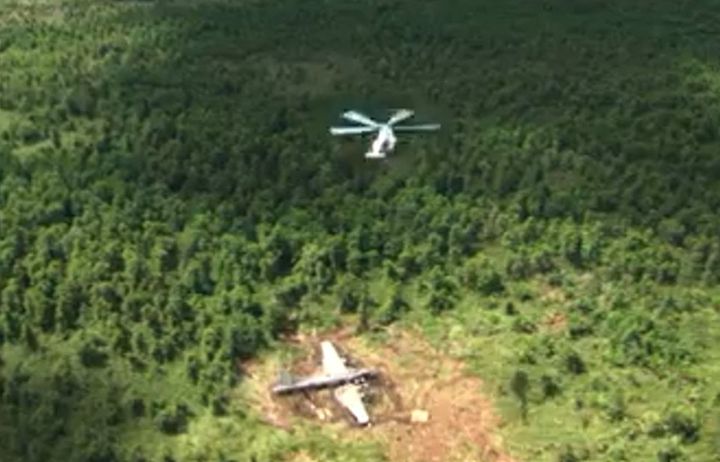
Screenshot from “The Swamp Ghost”
It was difficult to assess how long ago it had been abandoned there, but given the remoteness of the area, it could be up to decades. Still, even though it was probably old, the aircraft was eerily intact. Intrigued by their finding, the soldiers nicknamed it “Swamp Ghost.”
Frozen in time
The Agaiambo is one of the most remote swamps on the planet, and it perfectly hid the Swamp Ghost under its 12-feet-high vegetation. Isolated from the world, the aircraft remained frozen in time, as if someone had left it there for a minute, and was about to come back for it.
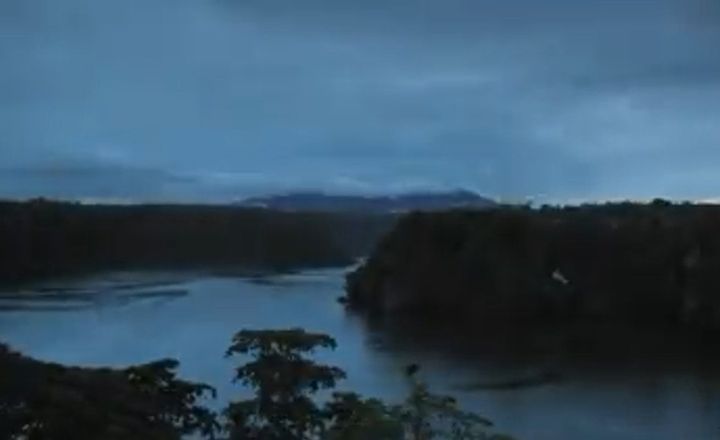
Screenshot from “The Swamp Ghost”
Upon closer inspection, the soldiers saw that the aircraft’s machine guns were fully loaded, like they were prepared for action. Inside the cabin, there was a used ashtray and a thermos with the remains of what was once strong, hot coffee.
Whatever happened to the crew?
The objects inside the aircraft proved that it had once carried a brave crew, but there was so sign of them now. If there had been any casualties related to the landing of this plane, the signs would be visible, but thankfully, that was not the case.
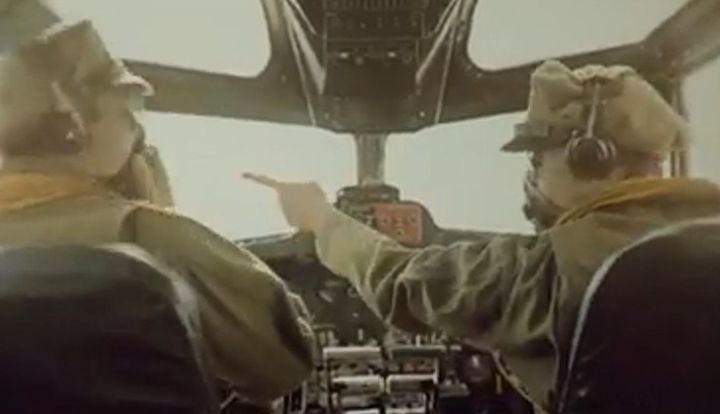
Screenshot from “The Swamp Ghost”
Whatever happened to the plane’s crew, then, and how come they ended up in the middle of a swamp, in the first place? Avid for more information, the soldiers contacted the United States about their discovery, and the aircraft was identified as the legendary B-17 41-2446.
A whole hullabaloo
The B-17 41-2446 was a World War 2 aircraft with an amazing story behind it, and we will get to that in a moment. For now, it suffices to say that once word got out that the B-17 in the Agaiambo swamp was “that” B-17, a whole hullabaloo was started.

Screenshot from “The Swamp Ghost”
It just so happens that when the aircraft was discovered in the swamp, “warbird hunting” was becoming a thing. What followed is that the plane, which had been resting in perfect quietude for 40 years, would become the center of an international turmoil.
Warbird hunting
A warbird hunter is a person who travels the world, often to isolated locations, to look for war-time plane wrecks. Some do it just for the thrill of seeing them in person, while others seek to extract, export, and sell them to private collectors or to museums.
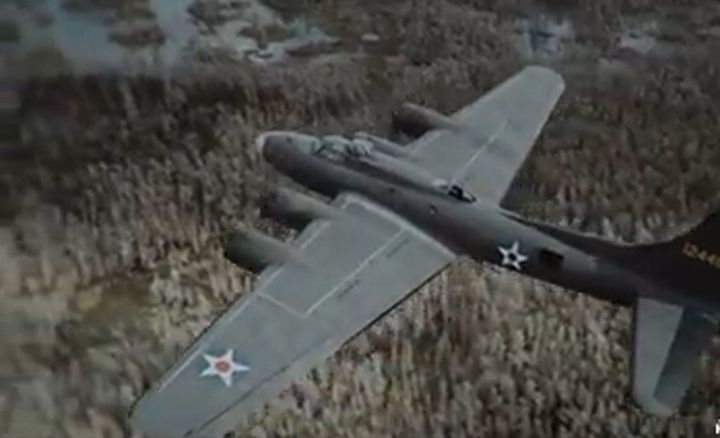
Screenshot from “The Swamp Ghost”
Published a few years after the (re)discovery of the Swamp Ghost, the book Pacific Aircraft Wrecks became somewhat of a guide for early warbird hunters, and it helped spread the legend of that mighty plane by showing dozens of photos of it, along with the details about its location.
Gaining the world’s attention
In the following years, visitors started making their way to the Swamp Ghost’s resting place. Foreign adventure-seekers would fly into Papua New Guinea (PNG) to make the exhausting trek to the middle of the swamp, and locals turned it into a business to guide them there.
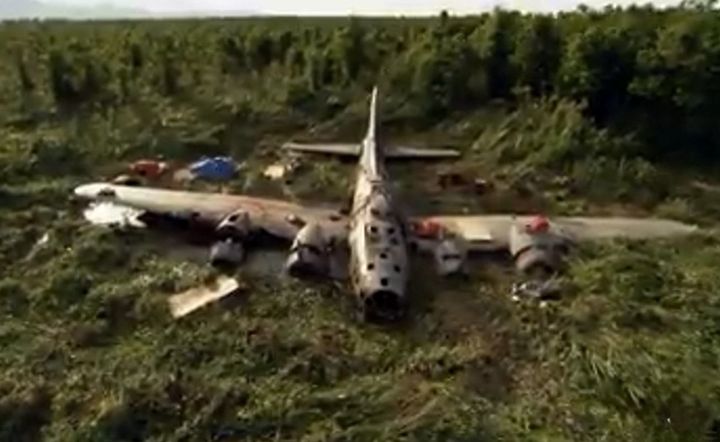
Screenshot from “The Swamp Ghost”
The Swamp Ghost became somewhat of an attraction, and many people didn’t pass on the opportunity of taking a few “souvenirs” back home – small parts, instruments, and even guns were taken from the aircraft.
A man with a mission
Through the next decades, the structure of the Swamp Ghost remained intact, but some enthusiasts feared it was only a matter of time until it would also end up degraded by the hands of travelers. Or, it would eventually start disintegrating in the swamp water.
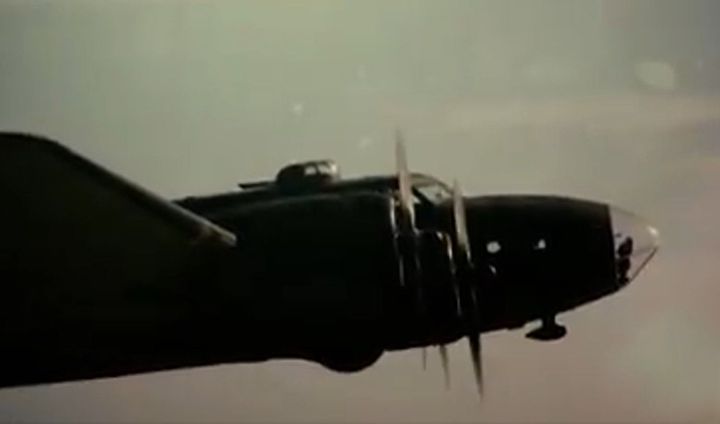
Screenshot from “The Swamp Ghost”
One of those enthusiasts was Alfred Hagen, a self-described “carpenter from Pennsylvania with grandiose delusions,” and a warbird hunter with a mission: to salvage the Swamp Ghost, and bring it home to the United States of America.
A personal connection
Hagen’s interest in warbird hunting was born from his connection to a relative he never got the chance to meet – his great-uncle Major William Benn, a pioneer of the “skip bombing” technique who was listed as Missing in Action in 1943, after a mission in the Pacific.
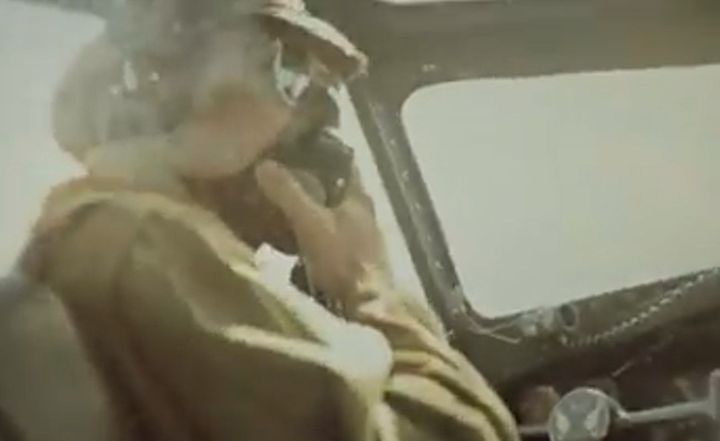
Screenshot from “The Swamp Ghost”
In 1995, Hagen started his journey through the jungles of PNG. He was searching for the wreck site in which his great-uncle had lost his life. He finally succeed in 1998, but that wouldn’t be the end of his journey. No, it was only the beginning.
A controversial project
Hagen helped locate and salvage many aircrafts that were, in his opinion, worthy of restoration and preservation. He took his missions to various places of the world, but his biggest and most controversial project happened right there where he started. “This particular aircraft may not be worth anything to some people. To me this B-17 is priceless,” Alfred Hagensaid in The Swamp Ghost documentary.

The salvage of the Swamp Ghost, which had been dormant in Papua New Guinea for decades, would take years of efforts, and thousands of dollars in investments. It would also spark very serious accusations against Hagen and his team.
A collective effort
Alfred Hagen was far from the first person who tried to salvage the B-17 from the swamp. A museum in California, for example, had carried out negotiations with a PNG institution for more than 10 years (!) before finally giving up.
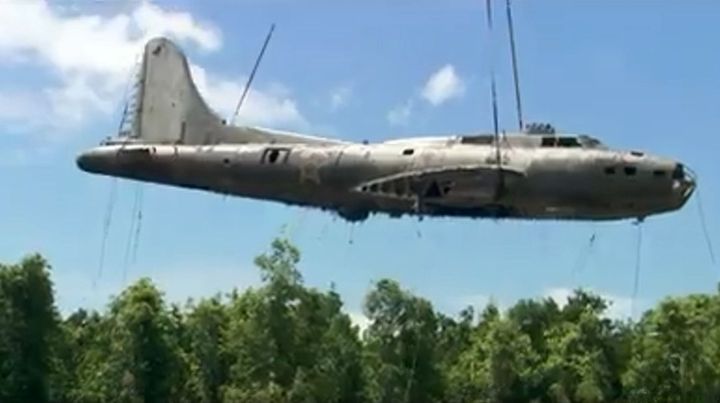
Screenshot from “The Swamp Ghost”
Hagen’s collective effort with millionaire entrepreneur and warbird enthusiast David Tallichet, and experienced warbird salvager Rob Greinert, was what made his endeavour successful. That, plus a lot of hard work, and $100,000 paid to New Guinea’s National Museum and Art Gallery in exchange for an export permit for the Swamp Ghost.
The hard work begins
Hagen’s ample financial backing allowed him to fly to PNG to work on the salvage himself. He had a team of 43 people who were ready to work hard and smart, but as if salvaging a 60-something-year-old WW2 aircraft wasn’t challenging enough, they also had to deal with the harsh conditions of the environment.
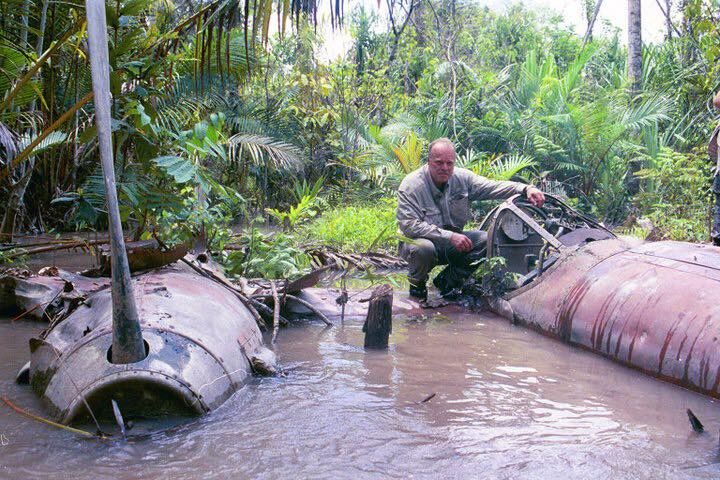
Image via @AlfredHagen/FB
They worked non-stop for close to four weeks, dismounting the engines, severing the wings, removing the tail, and lifting the fuselage, all while contending with hot weather, bugs, scorpions, and even crocodiles.
Stumbling blocks
Meanwhile, news about Hagen’s activities had spread around, and they gave rise to a huge debate in PNG about whether he was doing something illegal. Things escalated quickly, and soon, a special committee of Parliament was weighing in.

They concluded that the National Museum, which had granted Hagen the export permit for the Swamp Ghost, actually had no right to do such thing. So by the time the aircraft had been salvaged from the water and sat ready to be taken to the United States, the PNG government had already decided that it couldn’t leave the country.
A highly contentious move – and the long way home
The plane remained impounded for four years, and no one knew what would happen next. Then one day, in a highly contentious move, Hagen simply got tired of waiting for an official authorization, and took action. He shipped the Swamp Ghost to the United States without the authorization.
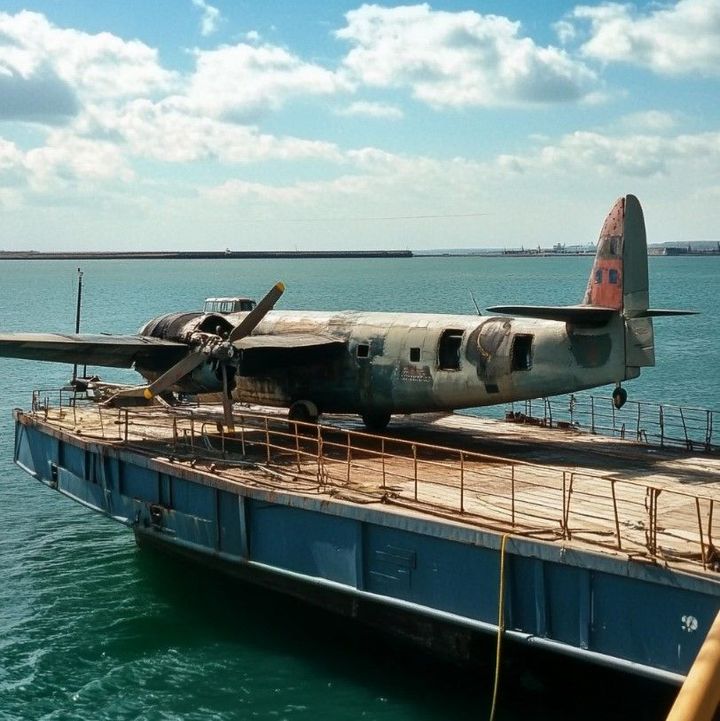
Image is for illustration purposes only: Image by Lauren Alkan/MJ
Once it arrived to America, it would take a few more years until the aircraft reached its final home: the Pearl Harbor Aviation Museum, in Hawaii, where the public can now learn about what made it legendary in the first place – the story of what happened to its crew.
Nine men with a mission
It was 1942, mere months after the attack on Pearl Harbour that sent the United States into formally entering World War 2. The country was leading its first long-range mission against the Japanese, and B-17 41-2446 was one of the assigned aircrafts.
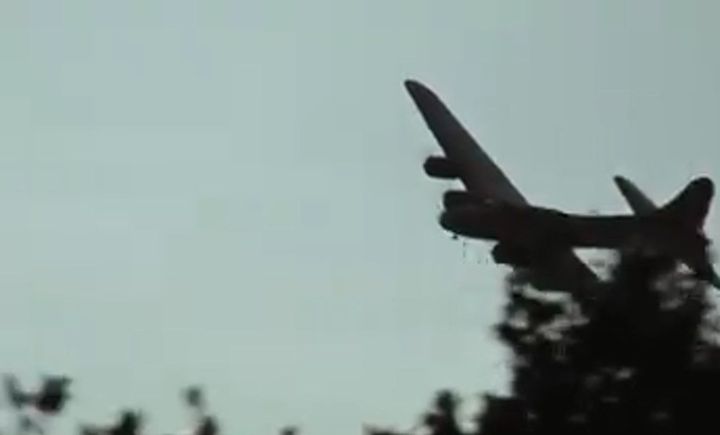
Screenshot from “The Swamp Ghost”
Captain Fred Eaton had a crew of eight men who accepted their mission with great bravery. The B-17 should take off from Australia, execute its mission over New Britain, refuel in Port Moresby (both in Papua New Guinea), then return to the Allied base in Australia. But as it often happens during dark times such as these, things didn’t go as planned.
A series of unfortunate events
From the very beginning, their mission was plagued with a series of unfortunate events. First of all, the plane flown by Captain Eaton was supposed to be one of nine, but due to various issues, four of the aircrafts didn’t even leave the ground.
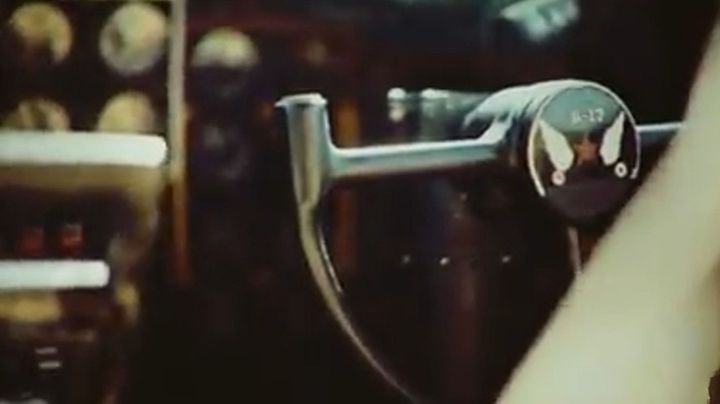
The sky was completely dark, and visibility was low. The planes that did take off ran into several tornadoes, and soon the B-17 was one of only two aircrafts that remained on air.
An unexpected confrontation
When they were finally flying over their target, they were supposed to drop their load, but due to a mysterious mechanical problem, the compartment doors didn’t open. They were forced to make a wide circle to try again.
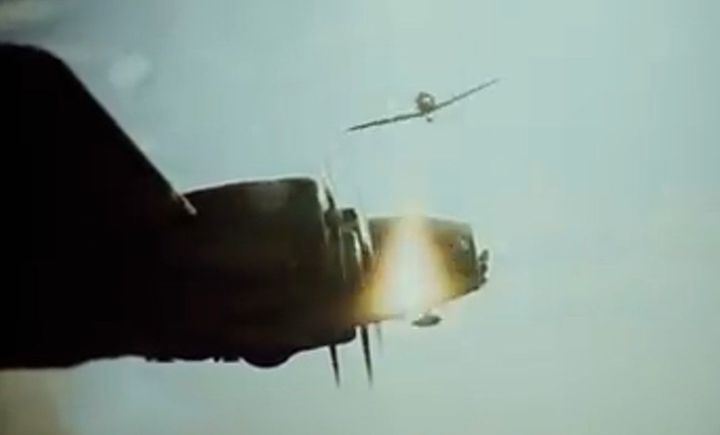
Screenshot from “The Swamp Ghost”
They succeeded, but by then, Japanese aircrafts were ready to fight. Suddenly, the crew of the B-17 was in a desperate battle for their lives, as they were being chased by half a dozen enemy planes.
A miraculous escape
They were grossly outnumbered, and adding to that the awful flying conditions of the night, their odds didn’t look good at all. The frantic chase went on, and that’s when an antiaircraft shell punched a hole through the B-17’s right wing.
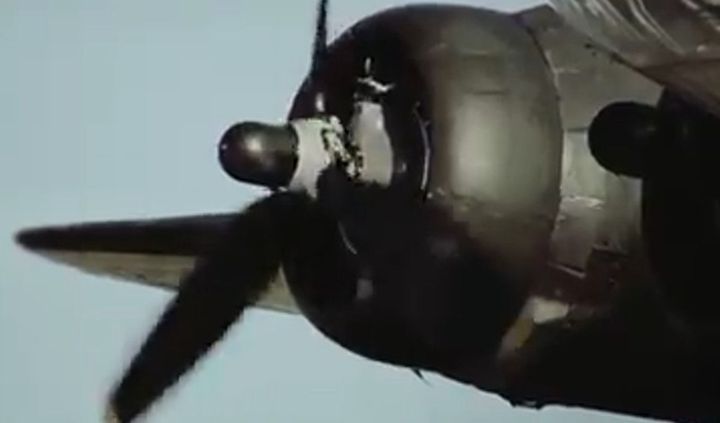
Screenshot from “The Swamp Ghost”
People say you never know how strong you are until being strong is your only choice, and that certainly applies here. The American crew persevered even when it looked like all hope was gone, and miraculously they were able to shake off the pursuers.
Another unforeseen problem
The original plan was that the B-17 would execute its mission, refuel in Port Moresby (which today is the capital of PNG), then return to the Allied base in Australia, from where it had taken off.
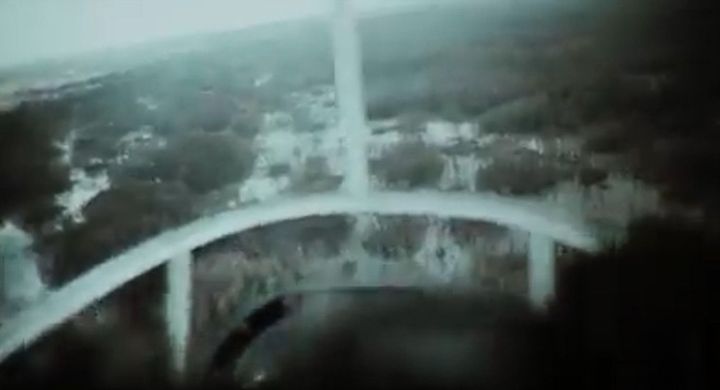
Screenshot from “The Swamp Ghost”
But the run-in with the enemy aircrafts meant that they had spent much more time on air than they had predicted. They were lucky to have survived the encounter, but as they sped up to Port Moresby, they realized they didn’t have enough in their tanks to reach their destination.
Making a change in course
They were flying over PNG, but still more than a hundred miles away from Port Moresby, when Captain Eaton looked down below and saw what he thought was a wheat field. He didn’t have enough fuel to continue flying much longer, so he announced his decision.
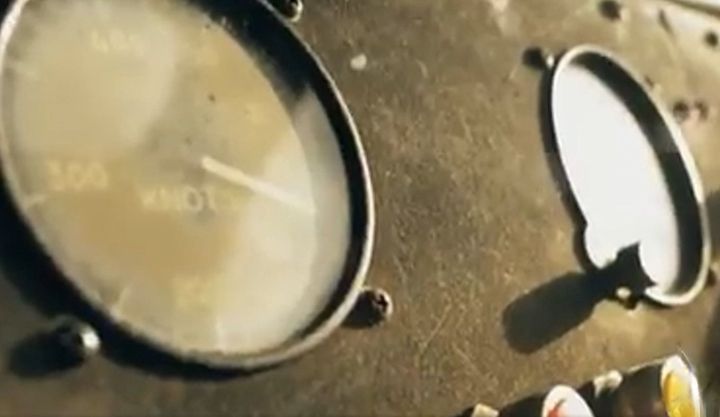
Screenshot from “The Swamp Ghost”
They would have to brace themselves for an emergency landing in the fields. He turned the aircraft and began the descent. Little did he know, they were actually heading toward a dangerous swamp.
Chest-deep in the water
The landing was a success, but once they opened the doors to the aircraft, the men realized they had a new problem. The plane was set down in six feet of water.
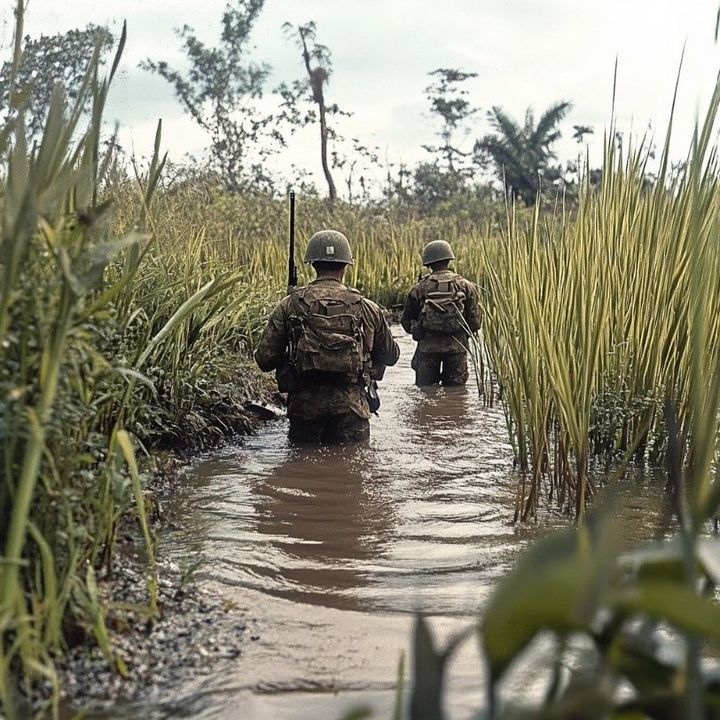
Image is for illustration purposes only: Image by Lauren Alkan/MJ
Jumping off the aircraft, they were chest-deep in the Agaiambo swamp. And they learned that what had seemed like wheat, from above, was in fact Imperata cylindrica, also known as kunai, or “blade grass.” As the name suggests, its tall leaves can cut through the skin like a blade.
A living nightmare
The nine men tried to find their way out of the swamp. Unfortunately, that proved to be more than a challenge – it was a living nightmare. Walking through the razor-sharp grass was unpleasant, to say the least, but the resting time wasn’t much better.
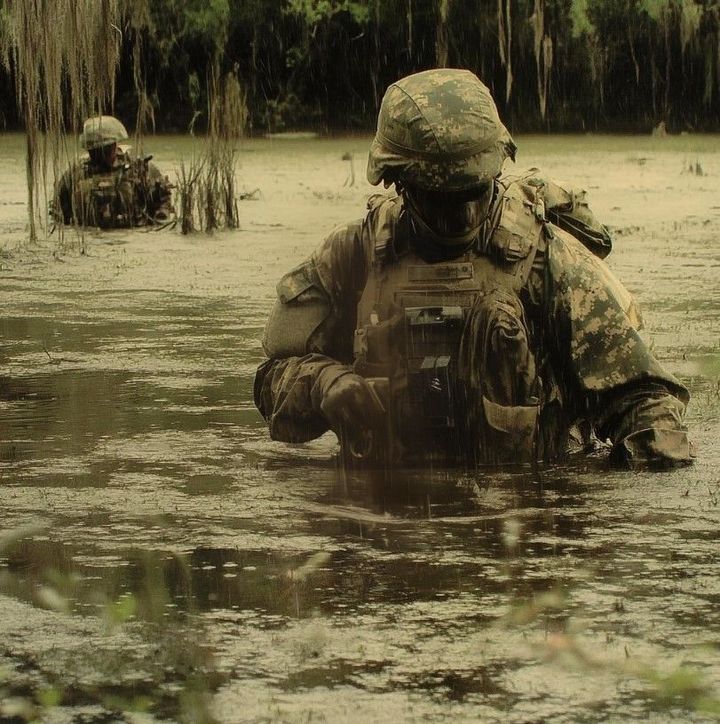
At night, they tried to rest on top of improvised mounds of grass, but they couldn’t get any sleep, both because the mounds kept sinking, and because they were being eaten alive by the mosquitoes.
Hungry, thirsty, and hallucinating
Their emergency rations had sunk in the water, so they didn’t have anything to eat, and a swamp is not exactly a good place to forage for food. Drinkable water was probably not abundant, either.
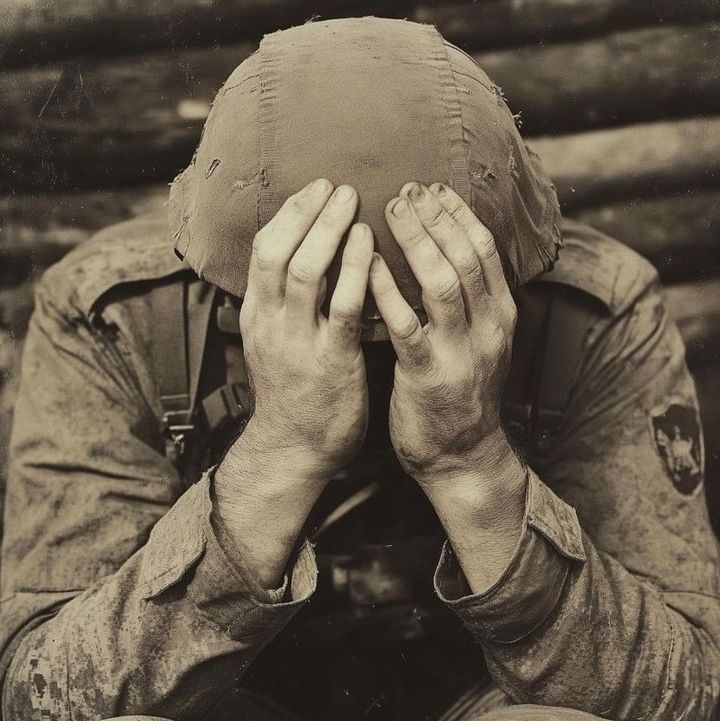
Image is for illustration purposes only: Image by Lauren Alkan/MJ
They were famished, cold, thirsty, and exhausted. Things got so bad, some of them started to hallucinate. One of the men “saw” a mess hall and started heading toward it to get something to eat, almost getting separated from the rest of the group; luckily, someone woke him up before that happened.
Friends or foes?
It took them days to reach dry land. Getting their feet out of the water was a relief, but they were still lost, and unsure of what they would find along the way. After a lot of walking, they encountered the first people they had seen in a while – it was some Papuans chopping wood.
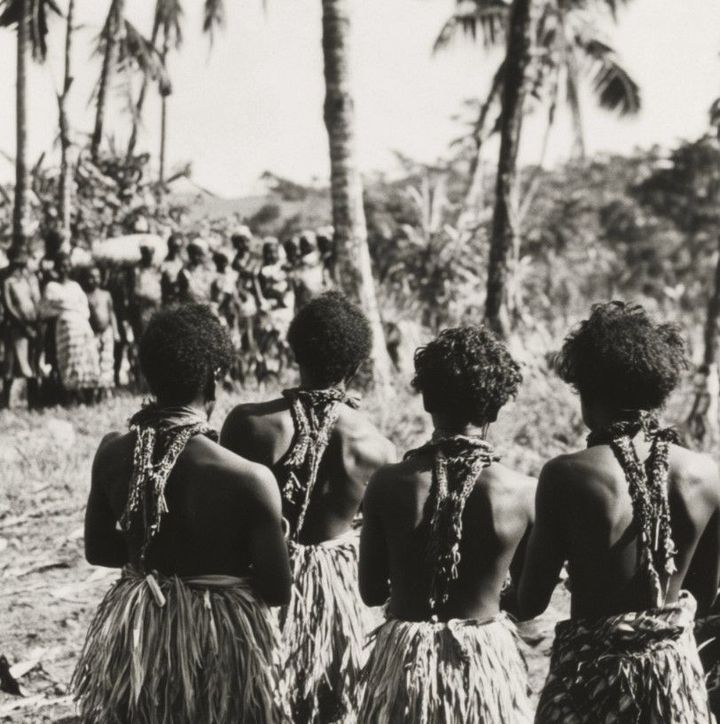
Captain Eaton and his men were probably excited to see other humans, but they had to thread carefully (there was a world war going on, after all). First, they needed to know – were they friends or foes? Turns out the Papuans were friendly, and they were happy to help the Americans.
Still a long way to go
The Papuans welcomed the Americans into their village for the night, feeding them, and providing them with a place to sleep. Then, they used their canoes to transport them by river to the coast, to the resident magistrate from Australia.
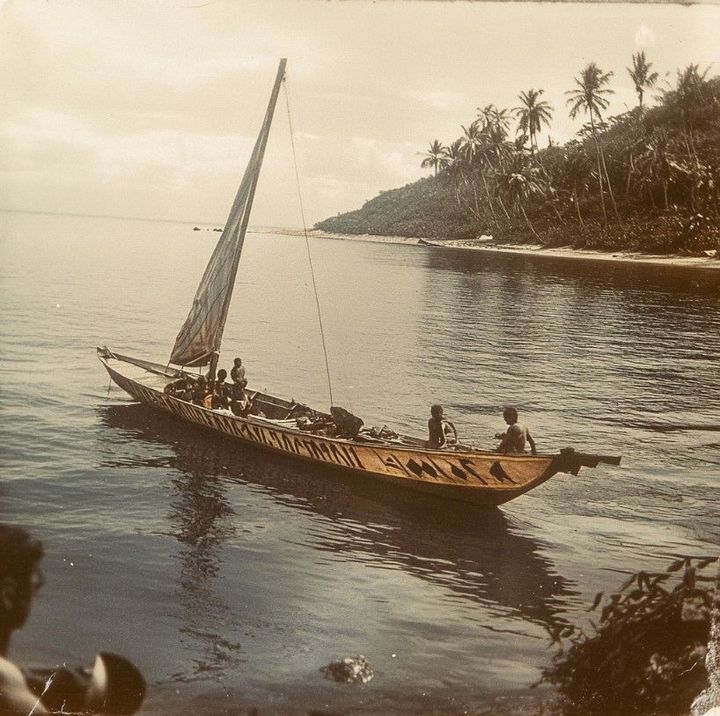
Image is for illustration purposes only: Image by Lauren Alkan/MJ
The journey was not over, though – it would still take several failed attempts until they were able to depart from there, by boat, to Port Moresby, where they were headed to in the first place (you know, before their plane was shot and ran out of fuel).
All’s well that ends well
When the nine men finally arrived in Port Moresby, 36 whole days had already passed since their emergency landing in the swamp. By then, all of them had been struck by malaria, and they needed some serious rest.

Image is for illustration purposes only: Image by Lauren Alkan/MJ
The group was transported for hospital treatment in Australia, where their journey had started in what seemed like a lifetime ago. It only took a couple of weeks until they were declared clear for duty, and they returned to combat.
A legend is born
On Captain Eaton’s subsequent missions, whenever he flew over the wreck in the Agaiambo Swamp, he would tell his new crew the story of how nine men had survived the most unfortunate series of events.
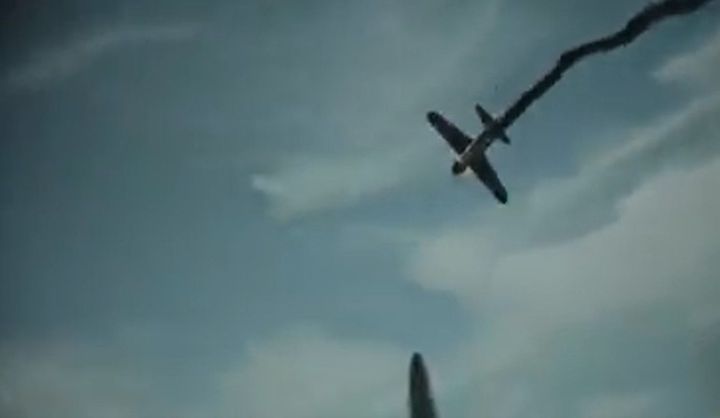
Screenshot from “The Swamp Ghost”
The people inside that B-17 had lived to tell the story of being shot, running out of fuel, belly-landing on the swamp, getting eating alive by mosquitos, having nothing to eat for days, and coming down with malaria. If that’s not legendary, we don’t know what is.
Setting the record straight
That fateful 1972 fly-by that led to the Swamp Ghost’s (re)discovery wasn’t the first time it was spotted since the war had ended. In truth, seven years earlier in 1965 a man named Frank Gray spotted it during a day flight. Later, he and three companions made the very arduous trek to try and find the plane.
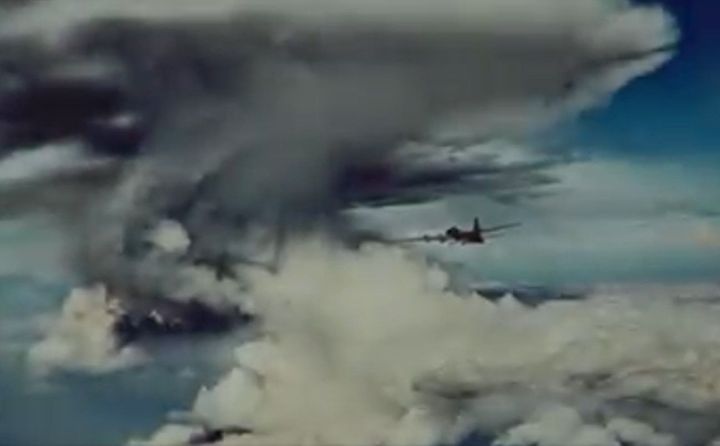
Screenshot from “The Swamp Ghost”
It took them three attempts, and they traversed the last quarter mile of the journey in over four hours, but they eventually got there. To their amazement, they found everything in near-perfect working order, but since their local guides were antsy to return to their village, very little could be learned.
So who actually owns it?
One big question lies in the background of this entire story – who owns the long-abandoned wreckage of planes like the Swamp Ghost? Well, the legal situation is almost as tricky to navigate as that swamp itself. See, the U.S. Navy never relinquishes ownership claims to any ship or aircraft, whether above or below water.
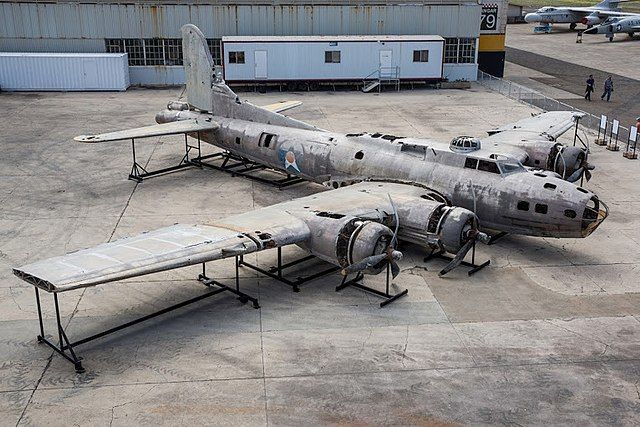
Image by Pacific Aviation Museum/Wikimedia Commons (CC BY 2.0)
The Air Force, however, considers any aircraft that crashed on land before November, 1961, as abandoned – meaning free for the taking. Simple? Not really, since that doesn’t extend to planes that crashed into the sea. Want another complication? Here: is the swamp sea or land? Good luck with that in court…
The case for the locals
However, that only takes into account the American perspective. There’s another side to this. After all, while the plane was American and staffed by American servicemen, it crashed in Papua New Guinea, where it remained for decades. If not a legal one, do the locals not at least hold a moral claim to it?

Augustin Begasi, the son of a local chief, tried to block Hagen’s removal of the plane. He failed, but remained adamant it wasn’t right. “The plane would bring tourists, but now there is nothing,” he lamented. “That village has no name now. If they left it there, it would have a name by now.”
Not particularly interested
Considering the Swamp Ghost was for years a point of contention between a national government and international businessmen, it’s quite surprising to find out who didn’t even care about it a bit – its very own crew! By the turn of the millennium, only three of the Ghost’s original crew were still alive.
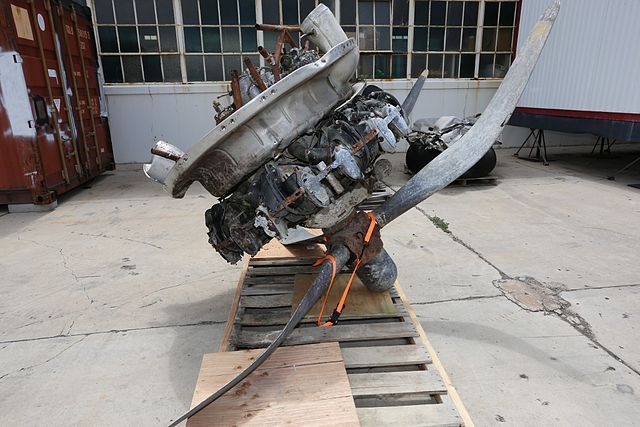
Image by Pacific Aviation Museum/Wikimedia Commons (CC BY 2.0)
One of them, George Munroe, didn’t mince words much. “A lot of people got taken with that plane, which baffles me,” he stated. “I’m just not very interested. It’s just trivia.” He didn’t even think they were very heroic…
121 bullet holes
Having finally been brought to its final resting place in the Pacific Aviation Museum in Pearl Harbor, experts were finally able to take a closer look at the legendary war machine. What they found was astounding. It’s believed the Swamp Ghost is the only intact, un-retired World War II B-17E bomber still in existence.
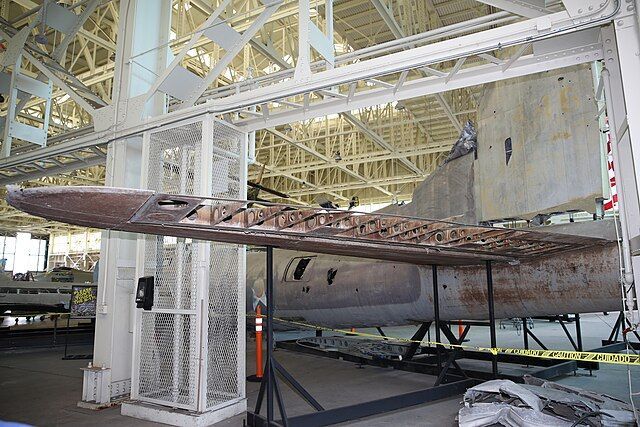
Image by Pacific Aviation Museum/Wikimedia Commons (CC BY 2.0)
According to the museum, it’s a “one-of-a-kind example” of the aircraft that played a vital role in winning the war for the Allies. And it’s certainly the only B-17 in the world to still carry its battle scars. At last count, the Ghost had 121 bullet holes – and even that didn’t stop it!
Getting the Disney treatment
Speaking of the museum, now that Swamp Ghost has found a permanent resting place there, museum officials have decided to honor the plane and its legacy in a very special way. Back in World War II, Walt Disney Studios provided nose art for many of the planes participating in combat.
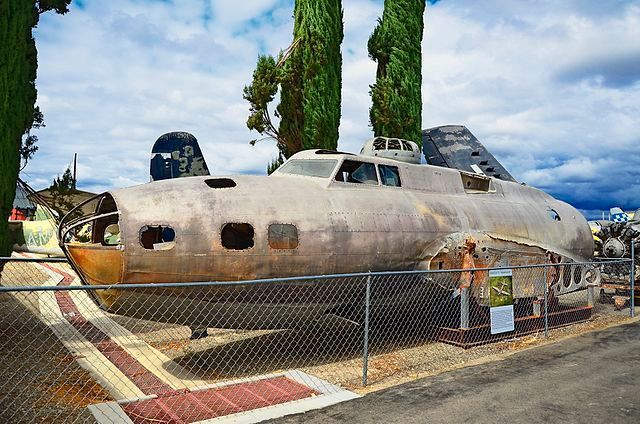
Image by Tomás Del Coro/Wikimedia Commons (CC BY-SA 2.0)
In fact, Disney provided more than 1,200 insignia to American and Allied forces, making use of many of their iconic characters. Most popular was Donald Duck, so when the museum approached Disney about creating nose art for the Ghost it was a no-brainer. The insignia you see here was created by Pocahontas co-director Mike Gabriel and others.
A loose cannon
But what about Alfred Hagen? Turns out his career was full of… shall we say, using unorthodox methods to get things done. He’s found parts of seven other aircraft from World War II in Papua New Guinea. In the process, he’s helped American authorities identify the remains of 18 Americans who were considered missing-in-action.
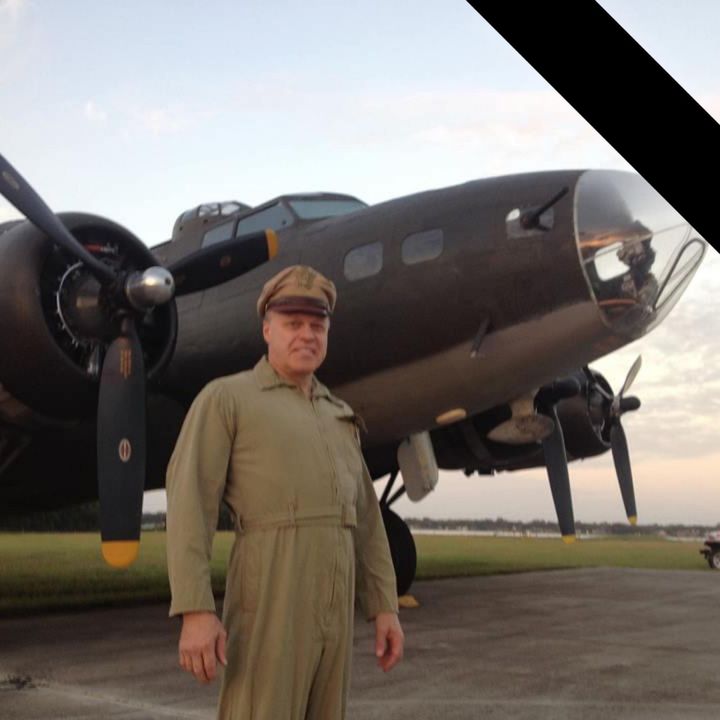
Image via @AlfredHagen/FB
In one memorable instance, however, he thought the Army’s bureaucratic machine was moving too slowly, so he contacted the family of a serviceman whose remains he found and revealed his fate to them, 51 years later. In return, military authorities dubbed him a “renegade” and a “loose cannon,” but he has zero regrets.
Getting older is never easy, especially after the love of your life passes away. The pain of losing a spouse can feel overwhelming, leaving behind a sense of crushing loneliness.

Image is for illustration purposes only
When Bernard Thompson lost his wife, his job at the supermarket was the only thing that kept him going. It helped him stay connected with the world and kept those empty feelings at bay. Little did he know that someone was about to come along and completely change his world yet again.
Meet Bernard Thompson
Ninety-three-year-old Bernard Thompson was a proud Midwesterner. He had lived in Omaha, Nebraska for his whole life. Bernard had worked in agriculture as a younger man, but had got a job in a supermarket when he was 70 to supplement his pension and had been there ever since.

Bernard didn’t need much to be content—just a steady routine, hearty meals, and his favorite pair of sturdy boots—but a recent tragedy had left him reeling. He couldn’t have predicted that his life was about to be thrown into turmoil all over again.
Devastating Loss
Just after Bernard had turned 89, his wife Maggie had died from a stroke. They had been high school sweethearts, together for more than 70 years and Bernard felt utterly lost without her. Their only daughter Nancy lived far away in Australia and couldn’t stay for long after the funeral, leaving Bernard alone in the house.
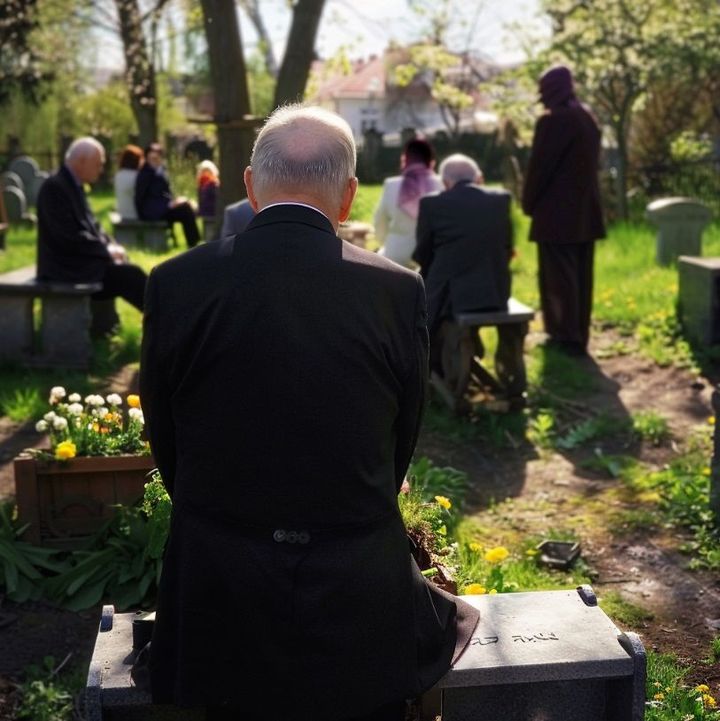
Image is for illustration purposes only
Although he missed her every single day, he knew Maggie wouldn’t have wanted him to waste away in her absence so he kept on going, heading to work each day, keeping the house in order, and seeing friends. Little did he know, that was all about to change.
